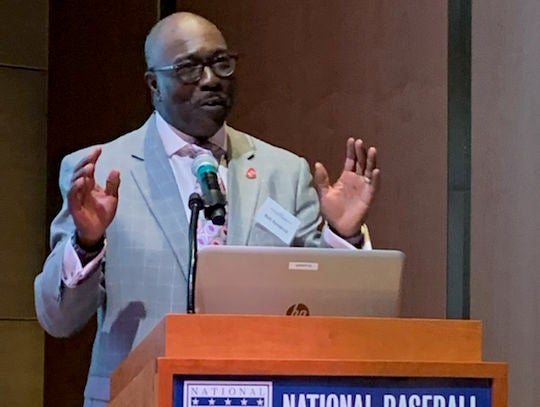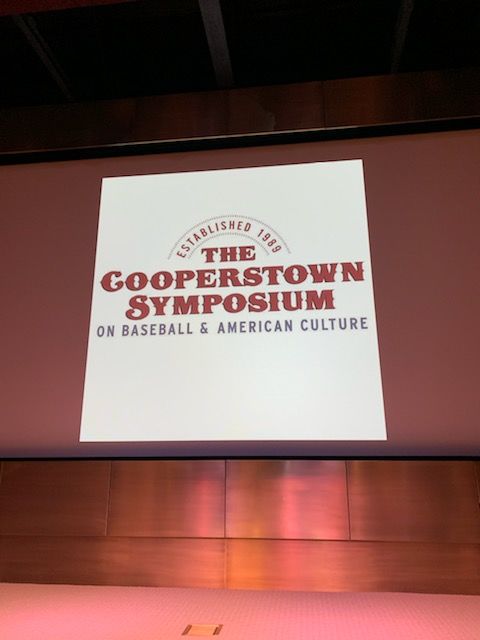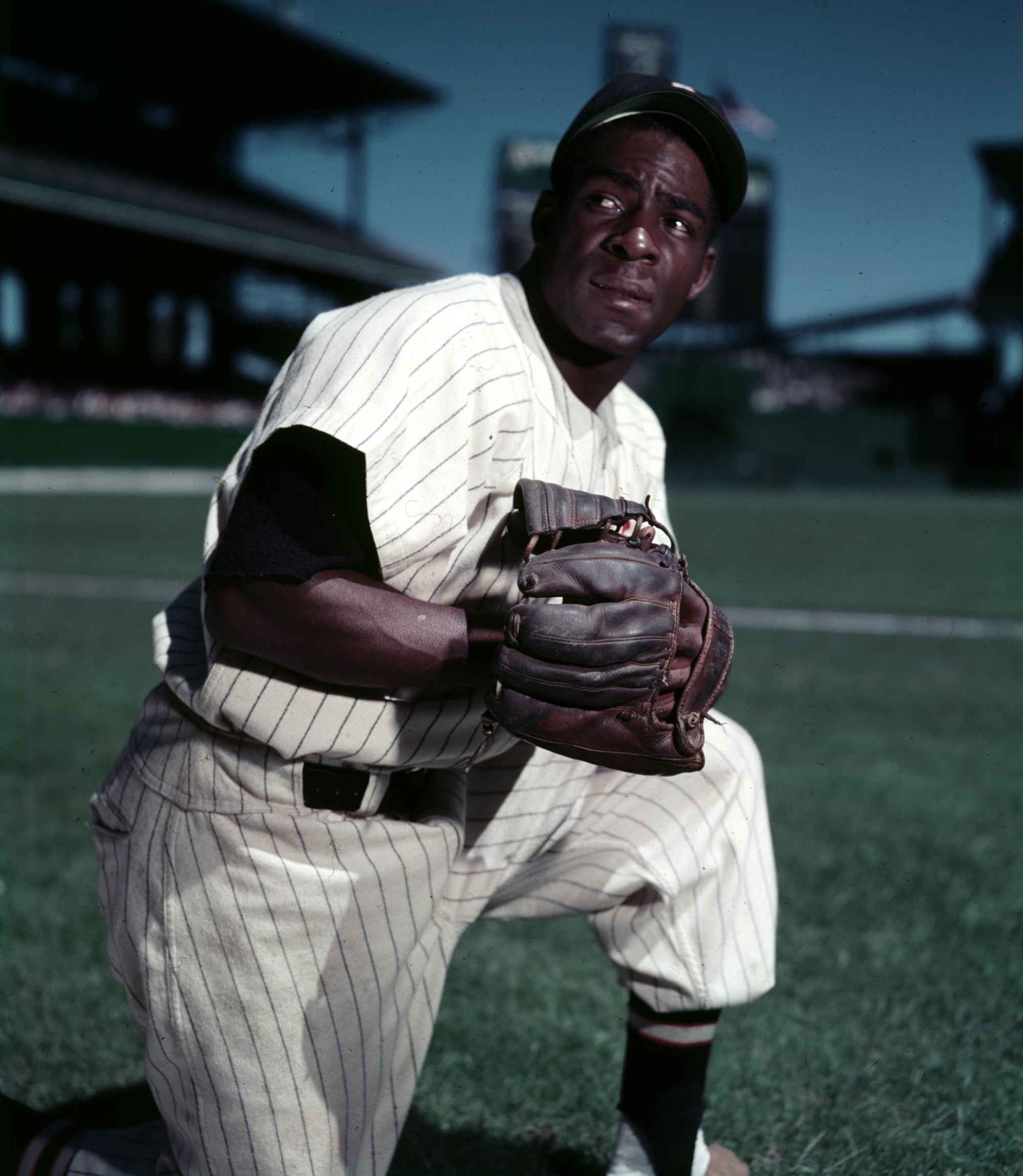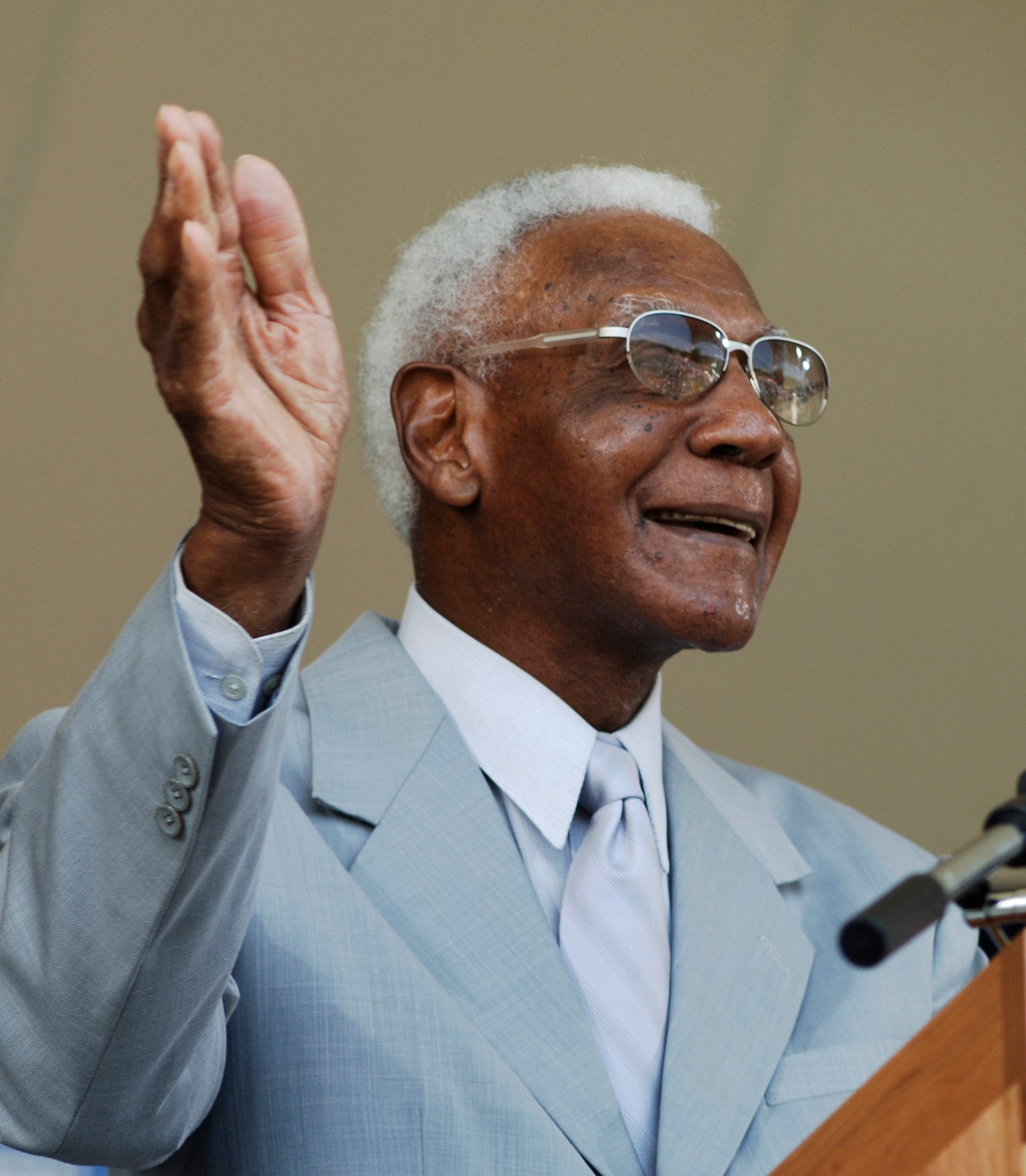- Home
- Our Stories
- Bob Kendrick leads off at Cooperstown Symposium
Bob Kendrick leads off at Cooperstown Symposium
Negro Leagues Baseball Museum President Bob Kendrick began the 33rd Cooperstown Symposium on Baseball and American Culture with a passionate and rousing look at the Kansas City institution he leads and the individuals who continued the fight to play despite the odds being stacked against them.
Kendrick’s keynote address, entitled, “How the Negro Leagues Changed the Game and America Too!” was held inside the National Baseball Hall of Fame and Museum’s Grandstand Theater. With an attentive crowd on hand, Hall of Fame President Josh Rawitch gave a rousing Cooperstown welcome to his friend.
Be A Part of Something Greater
There are a few ways our supporters stay involved, from membership and mission support to golf and donor experiences. The greatest moments in baseball history can’t be preserved without your help. Join us today.
“We are so lucky to have this man not just here in Cooperstown, but as a part of our game,” Rawitch said. “There are very few people on this planet who love the sport the way that he does or is as knowledgeable about the sport as he is, and frankly, who are just as good of an ambassador for being a good human on the planet as this fantastic man.”
The 2022 edition of the three-day Symposium would be the first in person since 2019, with the pandemic forcing its cancellation in 2020 and necessitating a virtual version in 2021.
Founded in 1989, the Symposium has evolved into baseball’s preeminent academic conference. It’s co-sponsored by the National Baseball Hall of Fame and SUNY Oneonta. Accomplished baseball scholars provide interesting and incisive presentations on virtually every aspect of the game off the field.
The NLBM is the world’s only museum dedicated to preserving and celebrating the rich history of African-American baseball and its profound impact on the social advancement of America.
Kendrick would eventually speak of the histories of such Negro Leagues legends as Jackie Robinson, Satchel Paige, John Gibson, Martín Dihigo, Cool Papa Bell, Rube Foster and J.L. Wilkinson, but it was his impassioned look at segregated baseball and the Negro Leagues Baseball Museum that seemed most relevant to the crowd.
“I’ll never forget walking into that office in 1993 looking for the Negro Leagues Baseball Museum. I was going to help promote the museum’s first-ever traveling exhibition,” Kendrick said. “And I remember walking in and the late Don Motely, who was then the executive director of the Museum, and I say, ‘I’m looking for the Negro Leagues Baseball Museum.’ He looks at me and he smiles and he says, ‘Son, you’re standing in it.’
“Little did I know, though, that I had literally just walked into what would become my passion. I absolutely fell in love with the story. And I fell in love with the amazing athletes who made the story. And I considered myself to be a baseball fan. And I quickly learned that I didn’t know a doggone thing about this sport. And I became enamored in it, I became engrossed in it. I wanted to learn as much as I could and I didn’t want to keep to myself. I wanted everybody else to feel the way that I felt about it. And then you started to meet guys like Monte Irvin and Buck O’Neil, two of the finest human beings to ever walk the face of this earth who just happened to be great baseball players.”
Kendrick was named President of the Negro Leagues Baseball Museum in March 2011.
“And I love this passage,” Kendrick said, displaying it on the theater’s screen, “and it’s taken from the Roman Catholic Bible Ecclesiastes 2:1-2 and it simply says, ‘My son, if you aspire to be a servant of the Lord, prepare yourself for testing. Set a straight course and keep to it, and do not be dismayed in the face of adversity.’
“You see, folks, that was Negro Leagues baseball in a nutshell. These athletes loved the game of baseball so much that they were willing to endure whatever social adversity confronted them as they traveled by the highways and byways of this country just to play baseball. But you see, their passion would not only change our sport, it would change our country for the better.”
Kendrick would add that a lot of people come to Kansas City now and they are expecting to be introduced to a sad, somber kind of story, but that’s not the case.
“Obviously, we understand that this story is anchored against the backdrop of American segregation, a horrible shameful chapter in this country’s history. The story of the Negro Leagues is not about that. It is rather about what came out of segregation,” Kendrick said. “This is a wonderful story of triumph and conquest. And it’s all based on one small simple principle: You won’t let me play with you in the major leagues. Okay. I’ll create a league of my own. And when you stop to think about that, that is the American way.
“And so while America was trying to prevent them from sharing in the so-called joys of her national pastime, it was the American spirit that allowed them to persevere and prevail. So this is not a woe-is-mine kind of story. These athletes never cried about the social adversity. They went out and did something about it.”
Kendrick also talked of what he shares with his guests when they come to the Negro Leagues Baseball Museum.
“What the Negro Leagues teaches us is very simple. In this great country of ours, if you dare to dream, and you believe in yourself, you can be or do anything you want to do,” Kendrick said. “They dared to dream of playing baseball. They had no idea that they were making history. They didn’t care about making history. They just wanted to play ball.
“But you see the pride, the passion, the perseverance, the determination and courage that they demonstrated in the face of adversity. Again, our story is not about the adversity, but rather what they did to overcome the adversity. And folks, that is a story that transcends race, it transcends age, and it transcends gender.”
Kendrick ended his keynote by touching on a trio of players who will be inducted into the Hall of Fame in July.
“I can’t wait to get back next month to celebrate all of those who are going into the Hall of Fame,” Kendrick said, “but particularly the likes of Cooperstown’s own Bud Fowler, my dear friend, the great Minnie Miñoso, and, of course, my great friend, my confidant, my mentor, the late great John Jordan ‘Buck’ O’Neil.”
Bill Francis is the senior research and writing associate at the National Baseball Hall of Fame and Museum







